Welcome to our free classical music site

Do you write about classical music? Are you a blogger? Want to team up with Classical Connect? Send us a message, let's talk!

Do you write about classical music? Are you a blogger? Want to team up with Classical Connect? Send us a message, let's talk!
This Week in Classical Music: November 21, 2022. Rome again. Even though there are many significant anniversaries this week (composers Wilhelm Friedemann Bach, Benjamin Britten,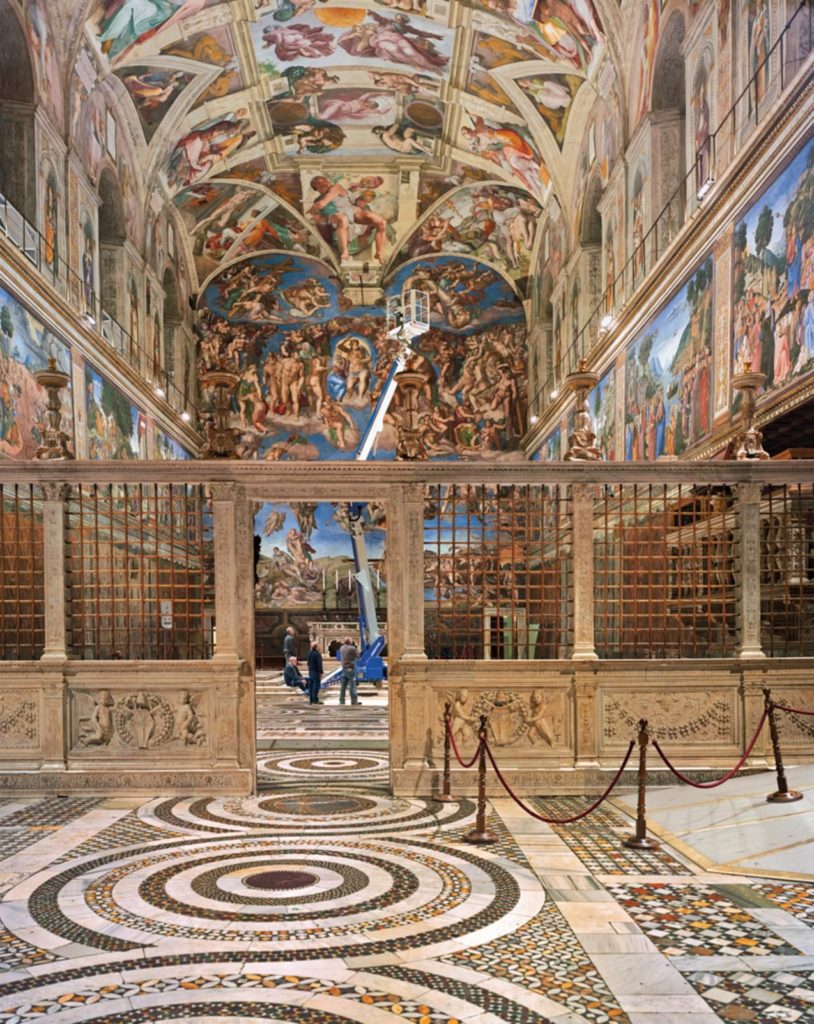 Manuel de Falla, Krzysztof Penderecki, and Alfred Schnittke, the pianists Wilhelm Kempff and Earl Wild, the violinist Hilary Hahn, the tenor Alfredo Kraus among them) we’ll return to Rome. Rome was central to the musical life of Europe for centuries, and it couldn’t have been otherwise: much of the music was written for religious services, while Rome was the place of papacy, the spiritual center of the Western world till the Reformation and to a considerable extent even later. It was especially so when polyphony was the predominant style in which church music, mass in particular, was written. Even though Rome was not the place where the first significant and identifiable European musical school had appeared – that was the Flanders and France (Belgium and Northern France now), where the Franco-Flemish school originated – many of the important composers traveled to Rome and served at the papal court. And why wouldn’t they if popes were rich patrons and the papal choir was considered the best in Europe? The choir had a long history, going back all the way to Scuola Cantorum, instituted by Pope Sylvester I in the fourth (!) century. It was reorganized by Pope Gregory I the Great (a great pope but not the inventor of the Gregorian chant which was a later creation). By the time of the
Manuel de Falla, Krzysztof Penderecki, and Alfred Schnittke, the pianists Wilhelm Kempff and Earl Wild, the violinist Hilary Hahn, the tenor Alfredo Kraus among them) we’ll return to Rome. Rome was central to the musical life of Europe for centuries, and it couldn’t have been otherwise: much of the music was written for religious services, while Rome was the place of papacy, the spiritual center of the Western world till the Reformation and to a considerable extent even later. It was especially so when polyphony was the predominant style in which church music, mass in particular, was written. Even though Rome was not the place where the first significant and identifiable European musical school had appeared – that was the Flanders and France (Belgium and Northern France now), where the Franco-Flemish school originated – many of the important composers traveled to Rome and served at the papal court. And why wouldn’t they if popes were rich patrons and the papal choir was considered the best in Europe? The choir had a long history, going back all the way to Scuola Cantorum, instituted by Pope Sylvester I in the fourth (!) century. It was reorganized by Pope Gregory I the Great (a great pope but not the inventor of the Gregorian chant which was a later creation). By the time of the 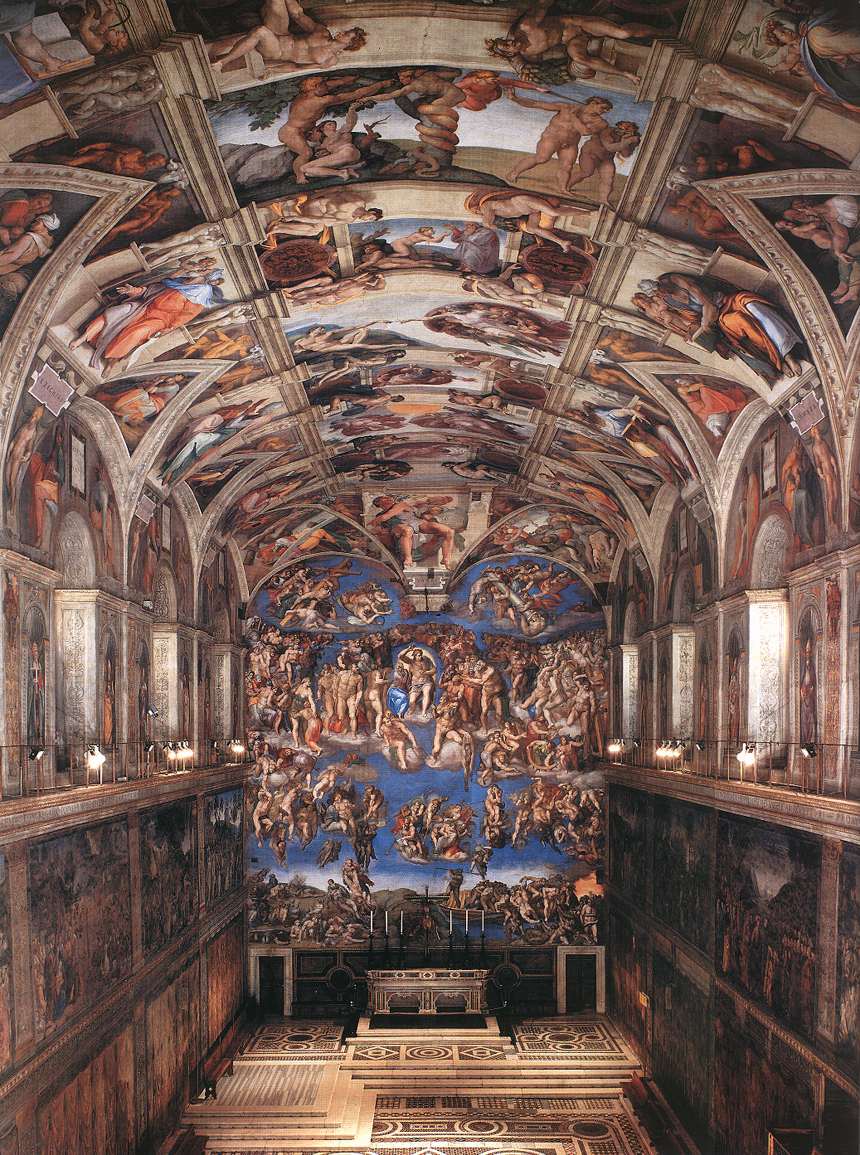 Renaissance, it was the private choir of the powerful popes and in 1470 it got a magnificent new home in the chapel built by Pope Sixtus IV, first called Capella Magna and then by the name we all know, the Sistine Chapel. Officially called Coro della Cappella Musicale Pontificia Sistina, it was acknowledged as the best musical ensemble in all of Europe.
Renaissance, it was the private choir of the powerful popes and in 1470 it got a magnificent new home in the chapel built by Pope Sixtus IV, first called Capella Magna and then by the name we all know, the Sistine Chapel. Officially called Coro della Cappella Musicale Pontificia Sistina, it was acknowledged as the best musical ensemble in all of Europe.
Guillaume Dufay, born around Brussels in 1397, was one of the first and probably most influential composers of the early Renaissance. He moved to Rome in 1428, became a member of the papal choir and, while there, wrote several motets and masses. Josquin des Prez, probably the greatest composer of the next period, was born around 1450 in the French-speaking part of the Low Countries; he came to Rome in 1489 and became the composer and music director of the Capella for the next five years. Some of the greatest composers of the younger generations followed suit. Jacob Arcadelt (born in 1507 and better known for his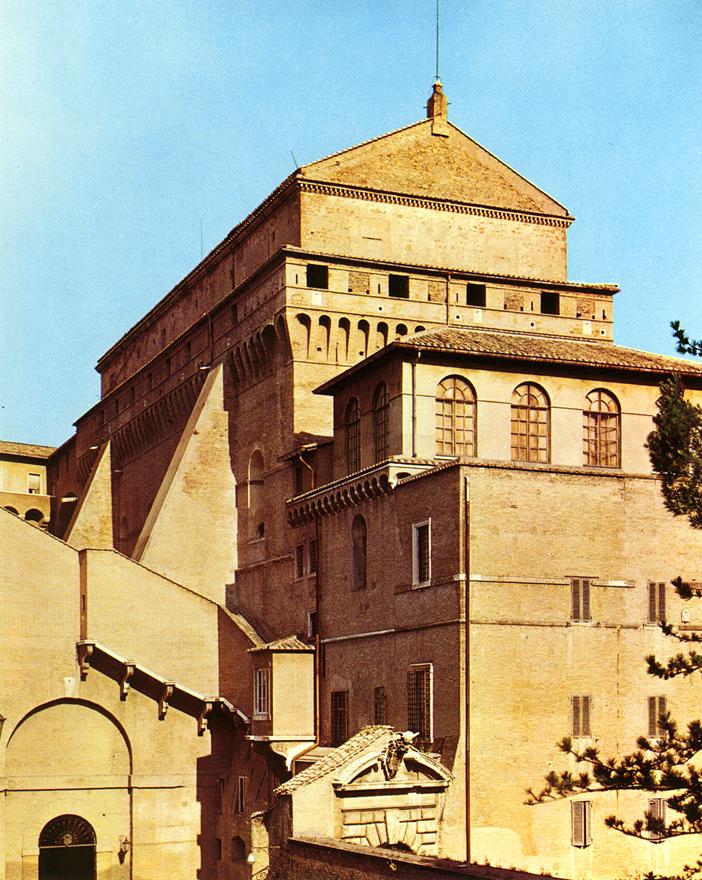 secular madrigals), moved to Rome in 1538 and sung in the Capella for several years. Orlando di Lasso, one of the geniuses of the High Renaissance (he was born in 1532), was employed as maestro di cappella at the Basilica of San Giovanni in Laterano, for centuries, till the new St. Peter’s Basilica was built, the most important church of Rome. Giaches De Wert (born in 1535), another influential composer, spent much time in Ferrara but also found work in Rome. But if there was a composer most closely associated with Rome, that would clearly be Giovanni Pierluigi da Palestrina. Palestrina, the Council of Trent and some composers that came up later – all that we’ll address in a subsequent entry. In the meantime, some music from Rome. By Guillaume Dufay, a motet Apostolo glorioso. By Josquin des Prez, also a motet, but for 24 voices Qui habitat. By Jacob Arcadelt, another motet, a beautiful Ave Maria. From Orlando di Lasso, one of the motets from Prophecies of the Sibyls. By Giaches De Wert, a madrigal Misera, che faro. And from the talented Luca Marenzio (1553-1599), who also spent most of his career in Rome, another madrigal, Madonna, sua mercé. Permalink
secular madrigals), moved to Rome in 1538 and sung in the Capella for several years. Orlando di Lasso, one of the geniuses of the High Renaissance (he was born in 1532), was employed as maestro di cappella at the Basilica of San Giovanni in Laterano, for centuries, till the new St. Peter’s Basilica was built, the most important church of Rome. Giaches De Wert (born in 1535), another influential composer, spent much time in Ferrara but also found work in Rome. But if there was a composer most closely associated with Rome, that would clearly be Giovanni Pierluigi da Palestrina. Palestrina, the Council of Trent and some composers that came up later – all that we’ll address in a subsequent entry. In the meantime, some music from Rome. By Guillaume Dufay, a motet Apostolo glorioso. By Josquin des Prez, also a motet, but for 24 voices Qui habitat. By Jacob Arcadelt, another motet, a beautiful Ave Maria. From Orlando di Lasso, one of the motets from Prophecies of the Sibyls. By Giaches De Wert, a madrigal Misera, che faro. And from the talented Luca Marenzio (1553-1599), who also spent most of his career in Rome, another madrigal, Madonna, sua mercé. Permalink
This Week in Classical Music: November 14, 2022. Rome. On one of our recent walks in Rome, while coming down the Janiculum Hill (the Belvedere at the top offers a magnificent view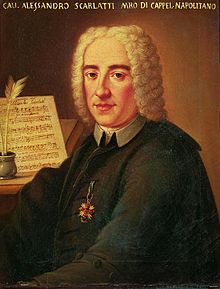 of the city), we came across a sign on a gate, Accademia degli Arcadi. The gate was closed and led, it seemed, into the gardens. That was puzzling: could it be the Academy? Wasn’t it dissolved many years ago? We had to investigate, and the answers were surprising – but first let’s look back at what Accademia degli Arcadi was about and when. The beginnings of the Academy go back to the time of Queen Christina of Sweden’s sojourn to Rome. Christina, who abdicated the Swedish throne in 1654 but kept much of her riches, converted to Catholicism, settled in Rome in the Palazzo Farnese and surrounded herself with the most illustrious Roman intellectuals – poets, composers, philosophers. She became a patron to many of them. On January 24th of 1656 she opened an Academy, providing a space in the Palazzo Farnese, and called it Accademia degli Arcadi; it was a society devoted to cultural and intellectual affairs; its member met to discuss matters they deemed important, whether in poetry, music or arts. Much of it in those days was directed against the predominant Baroque style.
of the city), we came across a sign on a gate, Accademia degli Arcadi. The gate was closed and led, it seemed, into the gardens. That was puzzling: could it be the Academy? Wasn’t it dissolved many years ago? We had to investigate, and the answers were surprising – but first let’s look back at what Accademia degli Arcadi was about and when. The beginnings of the Academy go back to the time of Queen Christina of Sweden’s sojourn to Rome. Christina, who abdicated the Swedish throne in 1654 but kept much of her riches, converted to Catholicism, settled in Rome in the Palazzo Farnese and surrounded herself with the most illustrious Roman intellectuals – poets, composers, philosophers. She became a patron to many of them. On January 24th of 1656 she opened an Academy, providing a space in the Palazzo Farnese, and called it Accademia degli Arcadi; it was a society devoted to cultural and intellectual affairs; its member met to discuss matters they deemed important, whether in poetry, music or arts. Much of it in those days was directed against the predominant Baroque style.
After Christina’s death in 1689 the Academy had to move several times and, in 1723, thanks to the generosity of King John V of Portugal, it settled in a newly built villa in a garden on the slope of the Janiculum, called Bosco Parrasio. The gate leading to the villa was what we saw on our walk down the hill. The Academy functioned as an important cultural institution for many years but with time it became less relevant, and, by the end of the 19th century, quite conservative. It still exists to this day, but instead of being a place where new ideas are generated and new arts promoted, it became a research institution, branching into such fields as history and archeology. It also moved, and Bosco Parrasio stays mostly empty, though some concerts are being played there occasionally. The Academy’s new headquarters are located not far from Piazza Navona, in the Biblioteca Angelica on Piazza di S. Agosino.
During the Academy’s early, and most vigorous, days, many prominent composers were its members, among them Alessandro Scarlatti, Arcangelo Corelli, Giovanni Bononcini, and brothers Alessandro and Benedetto Marcello. The famous opera librettist Pietro Metastasio also was a member. The young Handel, while he lived in Rome, attended its meetings. Let’s hear some of the music created by the Arcadians. Alessandro Scarlatti was famous for his operas, but he also wrote some church music. Here’s Credo, from his Messa di Santa Cecilia. Maurice Abravanel leads the Utah Symphony Orchestra and the University of Utah Chorus. Giuseppe Valentini, another Arcadian, was born in 1681; he is not as well-known as Scarlatti but his Concerto in A minor, op. 7, no. 11 is delightful. Here it is, in the performance by the Musica Antiqua Köln.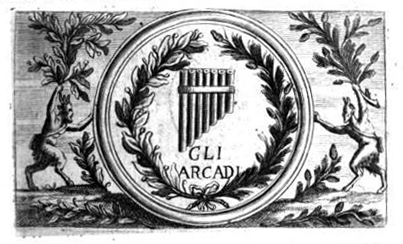
Permalink
This Week in Classical Music: November 7, 2022. Brief Italian entry 2. We’re still under the Italian spell, but this week it’s harder to maintain the Italian theme: we have only one Italian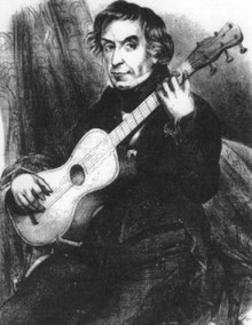 composer, and, unfortunately, rather mediocre – Luigi Legnani, born on November 7th of 1790 in Ferrara. He started as a tenor but switched to playing the guitar when he was almost 30. He turned out to be very good at that: after making a name for himself in Italy, he went to Vienna in 1822 and performed there to great acclaim. Critics calling him a worthy successor to Mauro Giuliani, another Italian, a virtuoso guitar player and composer, who spent many years in Vienna, built a highly successful career and made friends with Beethoven, Rossini and members of the Imperial court. Legnani toured many European countries and at some point, met Paganini, himself an excellent guitar player. They became friendly and even planned a concert together but at the last moment Paganini got sick. Legnani composed about 250 works, most of them for the guitar. Later in life he settled in Ravenna where he built fine guitars and violins. Here is Luigi Legnani's Capriccio no. 28, op. 20, played by the Italian guitarist Federica Canta.
composer, and, unfortunately, rather mediocre – Luigi Legnani, born on November 7th of 1790 in Ferrara. He started as a tenor but switched to playing the guitar when he was almost 30. He turned out to be very good at that: after making a name for himself in Italy, he went to Vienna in 1822 and performed there to great acclaim. Critics calling him a worthy successor to Mauro Giuliani, another Italian, a virtuoso guitar player and composer, who spent many years in Vienna, built a highly successful career and made friends with Beethoven, Rossini and members of the Imperial court. Legnani toured many European countries and at some point, met Paganini, himself an excellent guitar player. They became friendly and even planned a concert together but at the last moment Paganini got sick. Legnani composed about 250 works, most of them for the guitar. Later in life he settled in Ravenna where he built fine guitars and violins. Here is Luigi Legnani's Capriccio no. 28, op. 20, played by the Italian guitarist Federica Canta.
Our second Italian, Giuseppe Sinopoli, was a very talented (and unorthodox) conductor and composer. Born on November 2nd of 1946 in Venice, he studied with Bruno Maderna, one of most prominent Italian modernist composers, and later with Karlheinz Stockhausen in Darmstadt. In 1975 Sinopoli formed the Bruno Maderna Ensemble to perform contemporary music; in 1978 he conducted his first opera, Aida, in Venice. During that period, he composed an opera, Lou Salomé, which was staged in Munich in 1981. He later dropped composing and devoted himself to conducting. Sinopoli’s career developed rapidly: in 1983 he became the Chief conductor of the Academy of Santa Cecilia in Rome, went on to conduct the New York Philharmonic and Philharmonia Orchestra from London, worked at the Bayreuth Festival. In 1990 he was appointed to the prestigious position of music director at the Berlin Deutsche Oper but didn’t take it, moving instead to Dresden’s Staatskapelle as their principal conductor. Sinopoli died on April 20th of 2001 of a heart attack while conducting the third act of Aida at the Deutsche Oper. Here’s Giuseppe Sinopoli conducting the Staatskapelle Dresden orchestra in the first movement of Bruckner’s Symphony no. 5.Permalink
This Week in Classical Music: October 31, 2022. Brief Italian entry 1. A short hiatus with Italian flavor calls for an Italian theme for this week’s entry, and history, so rich on Italian music,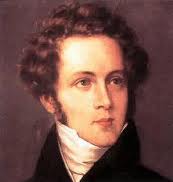 obliges. Vincenzo Bellini, the creator of La sonnambula, Norma, and I puritani, was born on November 3rd of 1801 in Catania, Sicily. Just last week we wrote about the great soprano sfogato Giuditta Pasta: she sung at the premier performances of two of these operas, as Anna in La sonnambula, in Milan’s Teatro Carcano, in March of 1831, and in December of the same year, the role of Norma, also in Milan but in Teatro alla Scala. Bellini was 33 when he died of dysentery. His first opera was written when he was 23, still a student at the Naples San Sebastiano Conservatory – Bellini had only ten creative years but still left us some of the most memorable bel canto operas.
obliges. Vincenzo Bellini, the creator of La sonnambula, Norma, and I puritani, was born on November 3rd of 1801 in Catania, Sicily. Just last week we wrote about the great soprano sfogato Giuditta Pasta: she sung at the premier performances of two of these operas, as Anna in La sonnambula, in Milan’s Teatro Carcano, in March of 1831, and in December of the same year, the role of Norma, also in Milan but in Teatro alla Scala. Bellini was 33 when he died of dysentery. His first opera was written when he was 23, still a student at the Naples San Sebastiano Conservatory – Bellini had only ten creative years but still left us some of the most memorable bel canto operas.
And also this week, two historical Italian singers were born: the great castrato Senesino, on October 31st of 1686, and Tarquinia Molza on November 1st of 1542. Senesino, an Italian alto castrato, born Francesco Bernardi in Siena (thus Senesino), was one of Handel’s favorite singers. He came to London in 1720, became enormously popular and was paid equally enormous fees (after leaving London, he built a fancy house in Siena, which carried an inscription: “the folly of the English had laid the foundation of it.” Senesino sung in 20 Handel operas, of which 17 were written for his voice; his performance in Giulio Cesare was called “beyond all criticism.” Here, from a 2012 Salzburg production of Giulio is Andreas Scholl, the German countertenor, as Cesar, singing the aria Va tacito e nascosto (Silently and stealthily). This, alas, is only an approximation of Senesino’s voice. And from the same production, here’s Cleopatra’s aria E pur così in un giorno (And even so in a day) sung by Cecilia Bartoli. We suspect that she’s not worse than the famous Fancesca Cuzzoni who premiered the role in February of 1724.
Tarquinia Molza was an extraordinary woman: a brilliant singer, a virtuoso player on bass viol in a style called “viola bastarda,” and poet. She was born in Modena and around 1583, already a widow, moved to Ferrara, one of the musical centers of Italy, as a lady-in-waiting to the Duchess Margherita Gonzaga d’Este. In Ferrara she served as an advisor to the famous Concerto delle donne, of which we’ve written several times, for example, here. While at the court, she had a tryst with the composer Giaches De Wert, deemed inappropriate (she was a minor nobility while composers were considered of a serving class) and had to leave Ferrara. She moved to Rome and died there in 1617.Permalink
This Week in Classical Music: October 24, 2022. Brief entry: Scarlatti and Pasta. Domenico Scarlatti, a son of Alessandro , was born on October 26th of 1685, the year that also gave us Johann Sebastian Bach and George Frideric Handel. Domenico’s piano sonatas are as popular as ever, though out of the 555 that he had written during his lifetime in Italy and Spain, only a few are played often, while most of them remain unknown. Several pianists and harpsichordists, on the other hand, have recorded all of Scarlatti’s sonatas; Scott Ross, who was the first one to record the complete set in 1985. The British keyboardist Richard Lester also recorded all of them and the Italian pianist Carlo Grante is in a middle of his Scarlatti project, he’s playing them on a Bösendorfer piano. Here, almost randomly is Ivo Pogorelić playing Sonata in G minor, K. 450.
gave us Johann Sebastian Bach and George Frideric Handel. Domenico’s piano sonatas are as popular as ever, though out of the 555 that he had written during his lifetime in Italy and Spain, only a few are played often, while most of them remain unknown. Several pianists and harpsichordists, on the other hand, have recorded all of Scarlatti’s sonatas; Scott Ross, who was the first one to record the complete set in 1985. The British keyboardist Richard Lester also recorded all of them and the Italian pianist Carlo Grante is in a middle of his Scarlatti project, he’s playing them on a Bösendorfer piano. Here, almost randomly is Ivo Pogorelić playing Sonata in G minor, K. 450.
Luciano Berio, one of the most interesting composers of the second half of the 20th century, was born on October 24th of 1925. And Georges Bizet was also born this week, on October 25th of 1838..jpg)
One somewhat unusual anniversary: Giuditta Pasta. Pasta, born on October 26th of 1797 near Milan, was one of the greatest voices of the early 19th century. Based on the descriptions of her contemporaries, she was a real “soprano sfogato”. Sfogato, a rare voice, has a very large range, from mezzo, or even contralto, to the coloratura soprano. Many of the soprano sfogato roles were written by the bel canto composers of the 19th century, Rossini, Donizetti and Bellini. Maria Callas may be considered a soprano sfogato: she sung mezzo roles, such as Carmen, Rosina and Cenerentola, and also Norma, Lucia de Lammermoor and Anna Bolena, which require a very high tessitura, reaching the E above the high C. Three famous roles were created specifically for Giuditta Pasta: Donizetti's Anna Bolena, which she premiered in 1830, Amina in Bellini's La sonnambula and Norma in Bellini’s opera, both of which she sung in 1831. In the absence of the recordings of Pasta’s voice, here’s Maria Callas in the Mad scene (Il dolce suona) from Lucia de Lammermoor, in a 1953 recording.
Pasta performed in all major opera houses of Europe and also visited St-Petersburg: the portrait, above, by the Russian painter Karl (Kirill) Bryullov, was made there in 1830.Permalink
This Week in Classical Music: October 17, 2022. Liszt, Solti and more. Of all the composers and musicians born this week, Franz Liszt is by far the most important. A great composer and,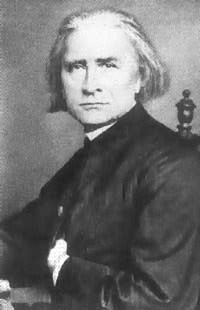 judging by the numerous ecstatic reviews left by his contemporaries, an even greater pianist, Liszt was born on October 22nd of 1811 in a small Hungarian village next to the border with Austria, both countries back then part of the Austrian Empire. We’ve written about Liszt many time and also published short articles on his piano cycle, Années de pèlerinage: Year One, Switzerland (Première année: Suisse), here, and Year Two, Italy (Deuxième année: Italie) here and Year Three, named just Troisième Année, here. Our library has about 250 different performances of Liszt’s works, many by young talented musicians, you can browse it here. Listen, for example, how 18-year-old Daniil Trifonov plays, live in concert, Liszt’s transcription of Schubert’s song Die Forelle.
judging by the numerous ecstatic reviews left by his contemporaries, an even greater pianist, Liszt was born on October 22nd of 1811 in a small Hungarian village next to the border with Austria, both countries back then part of the Austrian Empire. We’ve written about Liszt many time and also published short articles on his piano cycle, Années de pèlerinage: Year One, Switzerland (Première année: Suisse), here, and Year Two, Italy (Deuxième année: Italie) here and Year Three, named just Troisième Année, here. Our library has about 250 different performances of Liszt’s works, many by young talented musicians, you can browse it here. Listen, for example, how 18-year-old Daniil Trifonov plays, live in concert, Liszt’s transcription of Schubert’s song Die Forelle.
Luca Marenzio, a fine composer of late Renaissance, was born on October 18th of 1553 or thereabouts in a village near Brescia.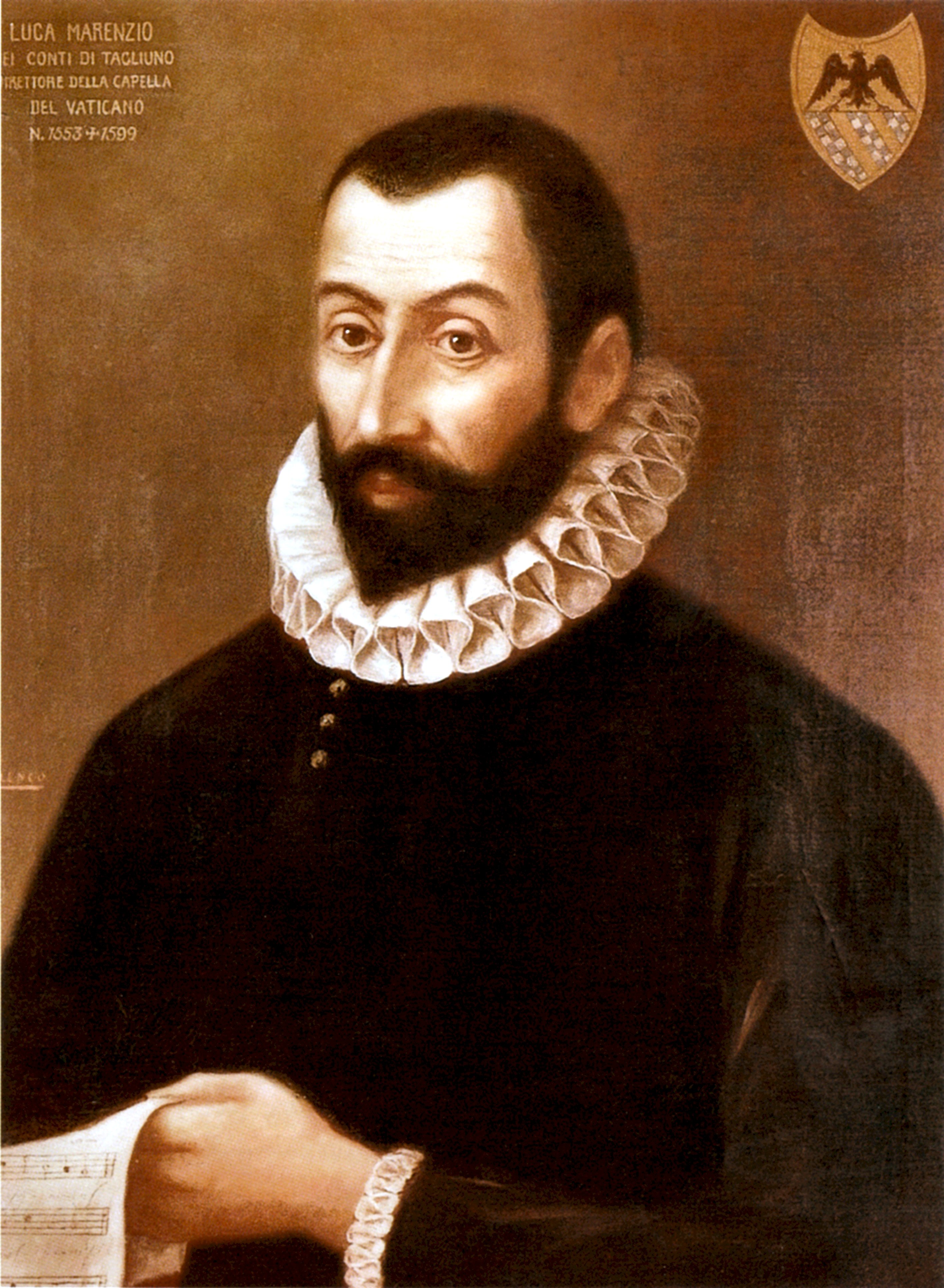 He served in courts of many notables – first, Cardinal Cristoforo Madruzzo; then, for a long time, Cardinal Luigi d’Este, son of Ercole II d'Este, Duke of Modena and Ferrara; then Cardinal Cinzio Aldobrandini, nephew of Pope Clement VIII; and finally, Ferdinando I de' Medici, the Grand Duke of Tuscany. You can read more about Marenzio here. He was one of the finest madrigalists of his time; listen, for example, to this madrigal for four voices, Madonna, sua mercé, performed by the Mirandola Ensemble
He served in courts of many notables – first, Cardinal Cristoforo Madruzzo; then, for a long time, Cardinal Luigi d’Este, son of Ercole II d'Este, Duke of Modena and Ferrara; then Cardinal Cinzio Aldobrandini, nephew of Pope Clement VIII; and finally, Ferdinando I de' Medici, the Grand Duke of Tuscany. You can read more about Marenzio here. He was one of the finest madrigalists of his time; listen, for example, to this madrigal for four voices, Madonna, sua mercé, performed by the Mirandola Ensemble
Another Italian composer, Baldassare Galuppi, was also born on October 18th but a century and a half later, in 1706. During his lifetime he was famous for comic operas, which he wrote to the librettos by Carlo Goldoni. A Venetian, he spent time in European capitals, Vienna, St. Petersburg and London. One of his piano sonatas (no. 5 in C Major), which is often played in music schools, was made famous by Arturo Benedetti Michelangeli. He also wrote a fine mass, Messa di San Marco. Here’s the section Qui sedes ad dexteram Patris (Thou who sits at the right hand of the Father) performed by the Vocal Concert Dresden.
Finally, a round date: Georg Solti was born as György Stern into a Hungarian Jewish family on October 21st of 1912, 110 years ago, in Buda. One of the greatest symphonic and opera conductors of the 20th century, he led the Chicago Symphony from 1967 to 1991. Even though we have many samples of his art in our library, we’ve never written about him at length. We’ll do it soon, in the meantime, here’s Solti conducting Liszt: Le Preludes, in the 1992 live recoding from Salzburg, with the Chicago Symphony.
Permalink